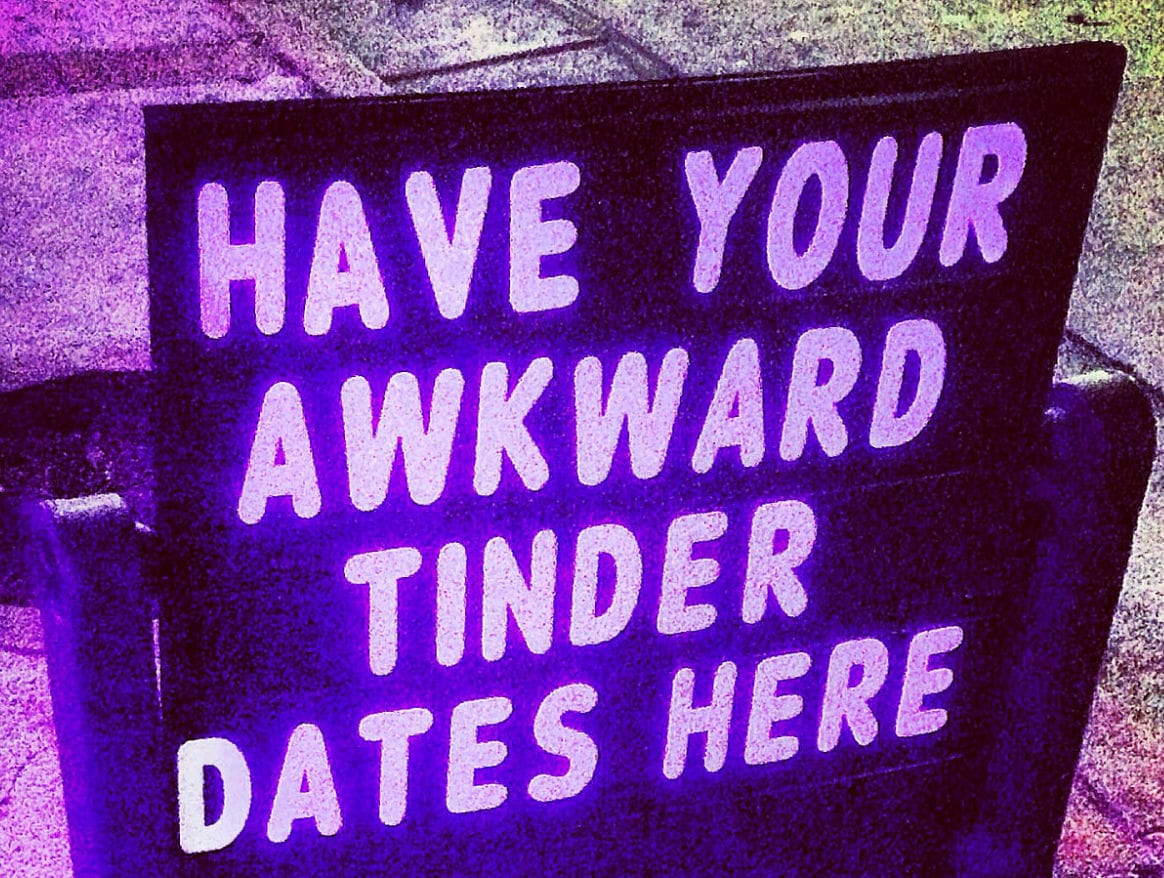The hardcore gamers of Tinder

As players of games we’re obsessed with creating the perfect game-player, even if that game-player is not entirely human. Deep Blue and Watson come to mind, meticulously planned AI constructs hellbent on playing the perfect game of chess or Jeopardy!, respectively. These machines are created to push beyond what the human could never imagine to do. Late last month, a Dutch art collective introduced its own experiment into the realm of the perfect player. Named “Tender,” this construct has only one goal: to play Tinder better than any human can.
Of course, the premise is more commentary than honest game-winning: a raw chicken cutlet is attached to a rotating spit. Swinging counter-clockwise the cutlet dips to gingerly touch an iPhone. Keeping contact, the cutlet swipes right on a Tinder profile. The process continues, swiping right on multitudes of accounts unaware they’re being gamed by a piece of meat.

But the idea of a “perfect game” on a dating app like Tinder only emphasizes the inherent “gameness” of it. For those who haven’t been curious enough to experience the hype: players create a profile limited to a handful of images and 450 characters. You then view a Rolodex of other player’s profiles based on proximity, a strange version of a matchmaking lobby. If you want to start a game with this player, you swipe right; if you’d rather not, you swipe left. You can tap on the profile to see the player’s other pictures and their description, but most only use the player’s opening picture to make this choice. If the player you swiped right on also swiped right, the game begins.
The game isn’t measured by points, nor is it measured by win or lose conditions—the game entirely exists in the minds of the players. Winning and losing is very much determined by the push and pull of social interaction between the two. The only thing measured is what the two players say to each other. In some sessions, the other player says nothing at all while other sessions yield a long list of calculated steps working towards a personal, hidden win condition.
to play Tinder better than any human can
Tinder keeps a record of the entire interaction, as if to serve as a reminder to players who feel like they lost a particular encounter. Players are free to do with this history what they will, though one can utilize it to retool their next approach, opting for a different opening move. Some players seem like an absolute impossibility to win with/against: instead of expending the energy to find a win condition players yield in entirety to their opponent, giving no move to contest the other’s supremacy of Tinder.
People familiar with hardcore games—a design philosophy which seemingly emphasizes game dedication over accessibility—can see the similarities in Tinder’s design. Starcraft II‘s matchmaking algorithm makes it very clear what kind of player you’ll be facing during the match. The constant repetition of losing and recalculating your approach is reminiscent of FROM Software’s Souls series (in which I admittedly could never make any meaningful progress). Even the profile system found on Tinder is not unlike a build in World of Warcraft, a load-out in Counter-Strike, or the team construction found in Ultimate Marvel vs. Capcom 3. Based on what you select, an opponent can compensate for what you present and approach accordingly. Tinder even teases you at times, goading you to keep playing each match-up.
some players don’t think they’re playing a game at all
There is also a metagame on Tinder, where what isn’t stated becomes just as important as what is stated. It’s not hard to see Tinder as a social game in the strictest sense: games are won by how well a person navigates social systems. But there is a critical difference in what game is actually being played: Tinder is merely a platform for a game that’s played outside of smartphones, much like MODO is an online representation of Magic: The Gathering.

Tinder often comes under fire for being this strange new digital “thing” which throws up even more mediated space between people who share physical space. But what Tinder exceeds best at is distilling and crystallizing the inherent gameness of dating culture. What sounds like a relatively simple experience (meeting an attractive person who is also attracted to you) has morphed into this complex system where each and every movement is scrutinized towards a goal that exists outside the two people playing it. The metaphors of love and dating as a game are confronted with every swipe performed on Tinder. We want to meet people but can only see the population as “players” motivated by their own goals and agendas. We put our identities out as proverbial gamepieces, utilized in this system as nothing more than a means to an end.
And the real messy thing about the whole affair is some players don’t think they’re playing a game at all. Games provide us a safe space to play and figure things out. But Tinder can lead to real experiences in a very real world where danger is a reality for some. The lauded hardcore game exists to point out the absurdities of systems and gives us the space to conquer them by winning. On Tinder, winning too often means maintaining this oppressive system, reducing others to nothing more than meat to conquer.
Header image courtesy of Don Harder via flickr. Body image courtesy of Chris Goldberg via flickr.



